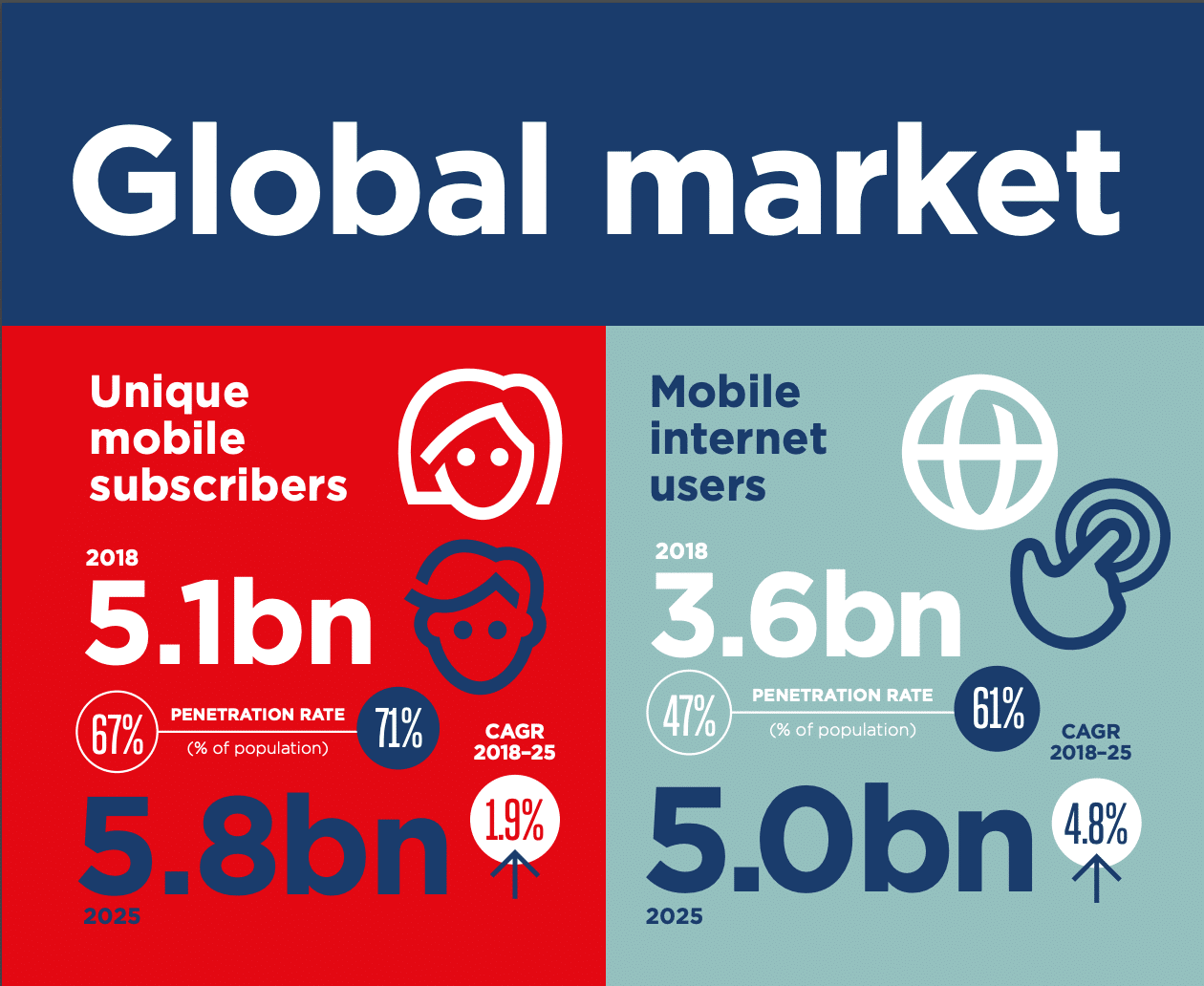In all industries, customer experience plays an increasingly major role in purchasing decisions. A study found that it will overtake price and product as the key brand differentiator in 2020.
This is especially true in the telecommunications industry. As prices and offers are often similar between competitors, the experience is already the main criteria of choice. While telecoms are at the heart of innovations such as 5G and the use of messaging apps, not all of them embraced the omni-digital trend for customer service.
In this article, we introduce 3 challenges that telecoms should address to engage with omni-digital customers and differentiate through customer experience.
1. Prepare for the shift to a majority of digital interactions
Telecoms customers have several reasons to contact their providers. The central role of telecoms with the multiplication of their services (broadband, TV, mobile, data services…) explains the growth of customer enquiries in the industry. Some of the most common reasons of contact include technical issues, questions about invoices, contract cancellation, adding new options.
While they were mostly relying on phone interactions in the past, customer interactions are now moving to digital. A study by Gartner outlines this shift, with a forecast of phone interactions dropping from 41% in 2017 to 12% in 2022.

This transition is encouraged by customers’ new habits: 72% of them now expect to use their channel of choice to engage with companies. These channels include the ones used in their daily lives, such as messaging (Facebook Messenger, WhatsApp, Apple Messages), social media (Twitter, Facebook, Instagram), live-chat, email.
Moreover, 92% of customers think that stores are not a must-have for mobile operators. It highlights the expectations for a digital experience and the relevancy of digital-only players.
One of the notable benefits of digital channels for customers is the ability to contact companies whenever they want. Rather than being constrained by opening hours and wait on the phone, they can send their request at any time. Enriched features such as media sharing can also help to solve issues more efficiently.
92% of customers think that stores are not a must-have for mobile operators Share on X
This shift brings new challenges for companies. When managing interactions from multiple digital channels, it is necessary to adopt new processes and tools, different from the ones used for the phone.
Processing large volumes of digital interactions requires to route messages with the right approach. By using AI, it is possible to classify and allocate incoming messages automatically. For telecoms, this means that a request is assigned to the right team immediately after being received: technical team, billing team, sales team. With the ability to process all messages from a unified interface, agents’ productivity is improved, meaning that more channels can be handled with the same number of agents. (This kind of collaboration is also a hallmark of effective customer service teamwork.)
To further improve address this issue and freeing up agents’ time, telecoms can also rely on AI to automate answers to common questions. Telecoms operators are receiving common questions requiring the same answers. These can be on topics such as SIM unlocking, invoices, subscription of new options… For this type of enquiries, customers expect a fast resolution at any time, without necessarily talking to an agent. A chatbot can provide instant 24/7 answers to those kinds of basic questions. For example, Vodafone adopted this approach with its chatbot TOBi:
2. Adopt the right channels and offer a consistent experience across them
After understanding the necessity to adopt digital channels and the shift that is already happening, the next step is to adopt the right channels. It is essential to start by analyzing customers to understand who they are and what are their preferences.
With 5.1 billion unique mobile subscribers in 2018, equivalent to 67% of the world’s population, telecoms customers have various profiles and demographics. This figure is even higher if we focus on North America (84% of the population) and Europe (85% of the population).

It means that when a telecom operator reaches various age groups of customers, with distinct preferences. While younger generations favor the use of channels such as messaging, used daily by 91% of teens, some others mostly rely on email and phone calls.
Adopting the right channels is one step, and the next one is being able to provide a consistent experience across them. It means that a customer should be able to use any channel for his enquiry and get the same service quality without being redirected.
Some telecom companies manage to offer that seamless experience, but many of them still have to implement it. For example, it is still regular for a customer contacting a brand via messaging to be asked to call to solve his problem. It suggests that they are forced to use a channel they did not choose and that they have to explain their issue again. It is an important issue when we know that 94% of customers expect not having to repeat information across channels.

It requires companies to move away from an organization by channel (one team for live chat, one team for email, and so on) to have an approach based on agents’ skills. By using a customer engagement platform, agents can process all digital interactions from a unified interface. Technological silos fall, and messages are allocated automatically to the most relevant agent based on the skills required to respond to the enquiry.
Knowing that it costs five times as much to attract a new customer than to keep an existing one, differentiating through customer experience to retain customers should be a priority.
3. Improve customer satisfaction and loyalty
Customer satisfaction is a crucial metric for telecoms. In an industry where it is easy to switch from one provider to another, customer satisfaction is a guarantee of loyalty.
In the US in 2018, the satisfaction index for telecoms services was standing at 67/100, one of the lowest across sectors. It translates to a churn rate at 22%, meaning 95 million customers switching providers. This issue is also illustrated by the average Net Promoter Score (NPS) that equals 32, one of the lowest industry average.

Facing this challenge, telecoms operators can improve their customer service by being present on channels used by customers daily. According to Capgemini, the use of digital channels positively impacts the NPS of telecom operators.
Offering a digital strategy is also proven to reduce churn: 46% telco customers who rated the digital customer experience as “poor” plan to switch provider within the next year, vs 14% only for customers who rated the customer experience as “great”.
46% #TelCo customers who rated the digital CX as poor plan to switch provider Share on X
The simplicity to contact a telecom over digital channels is an essential criterion for customers. If they are not able to do so with their current provider, they could switch to another, achieving this expectation.
To improve customer satisfaction and reduce churn, one of the keys at the disposal of telecoms is data. In the era of Big Data, the challenge is to centralize all the information available, analyze it, and make it usable.
By making this information available to agents when processing enquiries, telecoms should provide them with a 360° customer view. It is made possible by integrating the customer engagement platform with the CRM. With this complete customer view, agents can solve problems more efficiently, reduce waiting times, and identify signs of churn.
Finally, given the critical role of customer satisfaction, telecoms should adopt ways to measure it efficiently and smoothly for customers. Using a tool offering surveys on all digital channels is a great way to monitor satisfaction to understand strengths and areas of improvements.
Conclusion
Adapting to customers’ omni-digital habits is now essential for telecoms. Most of them are already offering online customer service, but the next step would be to adopt the right channels and provide a consistent experience across them. To do so, it is necessary to break silos and rethink the customer care team organization.
With extremely elusive customers and intense competition, customer experience becomes the main differentiator for telecoms. Investing in this field will not only improve satisfaction and loyalty but also have an impact on sales. Customers who had the best past experiences spend 140% more compared to those who had a less than pleasing previous experience.
Relying on a customer engagement platform enables telecoms to implement a true omni-digital strategy and to provide a seamless experience. Centralizing the management of all digital channels allows to improve productivity, get a complete customer view, and increase satisfaction. With an open and evolutive platform, telecoms can also prepare for whatever new channels and tools come next to stay ahead of the competition.
Originally published Sep 23, 2019, updated Sep 22, 2020






